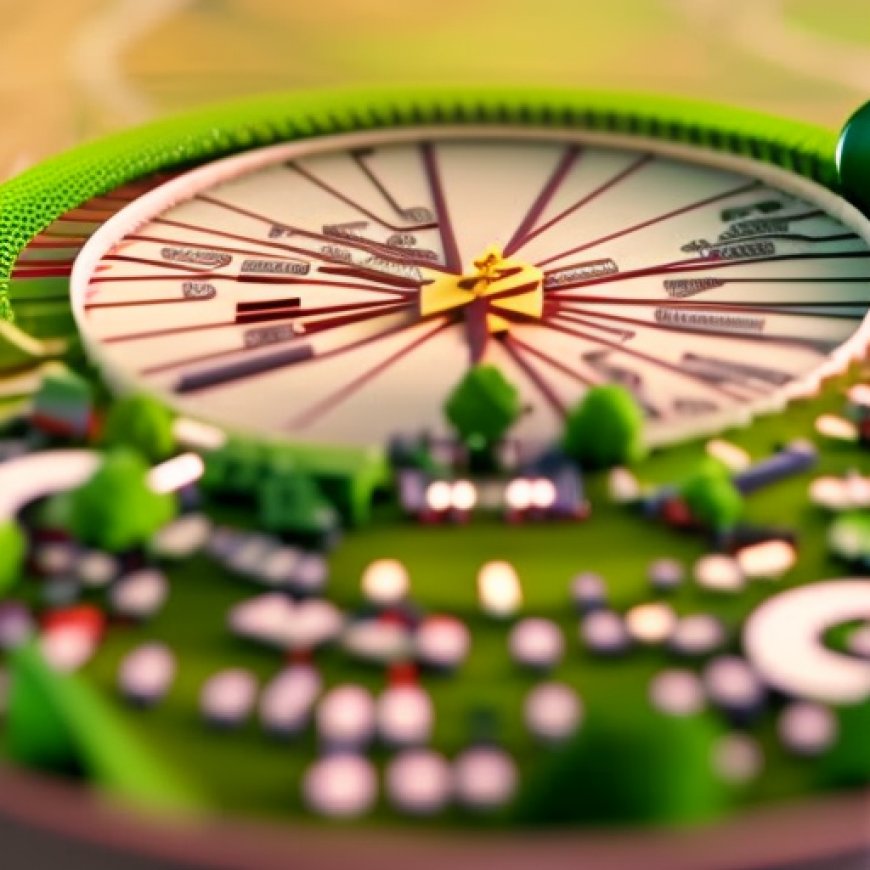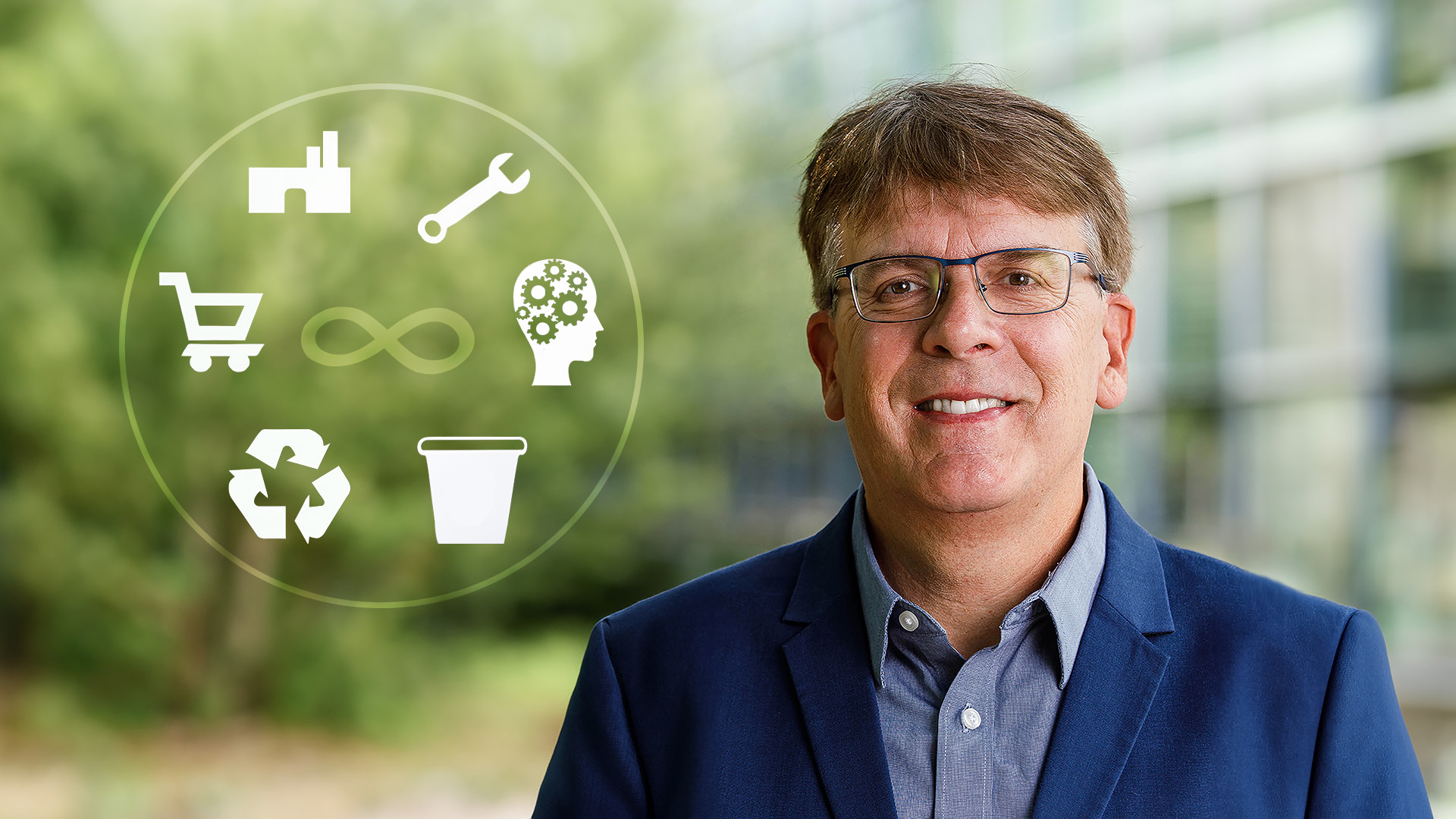Charting the course to a circular plastic economy
Charting the course to a circular plastic economy Full Circle


ASU research team receives NIST funding to develop circular plastic laboratory courses

Introduction
Plastics, more technically called polymers, have become vital to the functioning of modern society. However, as images of sea creatures trapped in plastics, islands of trash drifting in oceans and microplastics in the environment go viral, plastics’ impact on the ecosystem is more conspicuous and concern about environmental harm caused by non-degradable plastics is mounting.
As part of a solution to the problem, some researchers want to help develop what they call a circular plastic economy— an economy in which materials retain their value through repeated reuse, repair and recycling, and are discarded only as a last resort.
ASU’s Role in Developing Circular Plastic Economy
Arizona State University is one of five universities awarded $500,000 by the National Institute of Standards and Technology (NIST), within the U.S. Department of Commerce, to develop new curricula about such an economy for students interested in helping to reduce plastic waste.
The Training for Improving Plastics Circularity Grant Program aims to help prepare the future workforce needed to grow a circular economy for plastics. A circular economy requires new manufacturing methods, chemical processes and separation capabilities, as well as new approaches for optimizing how plastics cycle through the industrial supply chain.
A multidisciplinary team of researchers from the Ira A. Fulton Schools of Engineering and W.P. Carey School of Business at ASU, along with a collaborator at Virginia Tech, are taking on the challenge of developing a course to train the next generation of environmental sustainability leaders.
Modular Learning for Diverse Application
To cover the wide variety of topics integral to economic circularity, the year-long course consists of modules taught by experts in a range of fields.
The team is led by Tim Long, a professor of chemical engineering in the School for Engineering of Matter, Transport and Energy, part of the Fulton Schools, and director of ASU’s Biodesign Center for Sustainable Macromolecular Materials and Manufacturing, or SM3. He is also jointly appointed in the ASU School of Molecular Sciences.
Kevin Dooley, a distinguished professor of supply chain management in the W.P. Carey School of Business, will lead a module on supply chain management. Jennifer Russell, an assistant professor in Virginia Tech’s Sustainable Biomaterials division, will teach a module on integrating circular economic systems and practices in sustainable biomaterials. Jay Oswald, an associate professor of mechanical engineering in the Fulton Schools, will focus on sustainable manufacturing processes. The team is further supported by a group of ASU chemical engineers.
The course modules will be designed to be transportable and can be adopted by other universities. The modules will include both lectures and lab work to provide hands-on opportunities for students to work with the latest technology and tools related to circular plastic economy.
Unconventional Technologies for Out-of-the-Box Thinking
A portion of the project funding will be used to install new instrumentations, termed sustainability tools, in ASU’s Biodesign Institute SM3 center where the course will be based. The goal is to develop affordable and transportable tools that can be used by universities and organizations with limited resources.
Students will also have the opportunity to help develop these tools and conduct experiments to measure properties such as degradation rates, gas permeability, and waste stream separations.
The Next Generation of Sustainability Professionals
Developing a circular economy is essential to the health of the planet, and there is a growing demand for sustainability experts in both industry and academia. The course aims to train students from various academic disciplines who are interested in sustainability, including business students with expertise in supply chain analysis, circular economy, lifecycle analysis, and techno-economic analysis.
The development of this course is just the beginning for expanding degree offerings within ASU’s Biodesign Institute for students of any discipline. The long-term vision is to create a new educational model that includes a sustainable polymer certificate and ultimately a degree program.
By providing students with the knowledge and skills to innovate with a circular economy in mind, ASU is contributing to the achievement of the Sustainable Development Goals (SDGs), particularly Goal 12: Responsible Consumption and Production, and Goal 13: Climate Action.
SDGs, Targets, and Indicators
-
SDG 12: Responsible Consumption and Production
- Target 12.5: By 2030, substantially reduce waste generation through prevention, reduction, recycling, and reuse.
- Indicator 12.5.1: National recycling rate, tons of material recycled.
-
SDG 9: Industry, Innovation, and Infrastructure
- Target 9.4: By 2030, upgrade infrastructure and retrofit industries to make them sustainable, with increased resource-use efficiency and greater adoption of clean and environmentally sound technologies and industrial processes.
- Indicator 9.4.1: CO2 emission per unit of value added.
-
SDG 13: Climate Action
- Target 13.3: Improve education, awareness-raising, and human and institutional capacity on climate change mitigation, adaptation, impact reduction, and early warning.
- Indicator 13.3.1: Number of countries that have integrated mitigation, adaptation, impact reduction, and early warning into primary, secondary, and tertiary curricula.
Table: SDGs, Targets, and Indicators
| SDGs | Targets | Indicators |
|---|---|---|
| SDG 12: Responsible Consumption and Production | Target 12.5: By 2030, substantially reduce waste generation through prevention, reduction, recycling, and reuse. | Indicator 12.5.1: National recycling rate, tons of material recycled. |
| SDG 9: Industry, Innovation, and Infrastructure | Target 9.4: By 2030, upgrade infrastructure and retrofit industries to make them sustainable, with increased resource-use efficiency and greater adoption of clean and environmentally sound technologies and industrial processes. | Indicator 9.4.1: CO2 emission per unit of value added. |
| SDG 13: Climate Action | Target 13.3: Improve education, awareness-raising, and human and institutional capacity on climate change mitigation, adaptation, impact reduction, and early warning. | Indicator 13.3.1: Number of countries that have integrated mitigation, adaptation, impact reduction, and early warning into primary, secondary, and tertiary curricula. |
Analysis
1. Which SDGs are addressed or connected to the issues highlighted in the article?
The issues highlighted in the article are connected to SDG 12 (Responsible Consumption and Production), SDG 9 (Industry, Innovation, and Infrastructure), and SDG 13 (Climate Action).
2. What specific targets under those SDGs can be identified based on the article’s content?
Based on the article’s content, the specific targets identified are:
– Target 12.5: By 2030, substantially reduce waste generation through prevention, reduction, recycling, and reuse.
– Target 9.4: By 2030, upgrade infrastructure and retrofit industries to make them sustainable, with increased resource-use efficiency and greater adoption of clean and environmentally sound technologies and industrial processes.
– Target 13.3: Improve education, awareness-raising, and human and institutional capacity on climate change mitigation, adaptation, impact reduction, and early warning.
3. Are there any indicators mentioned or implied in the article that can be used to measure progress towards the identified targets?
Yes, there are indicators mentioned in the article that can be used to measure progress towards the identified targets:
– Indicator 12.5.1: National recycling rate, tons of material recycled.
– Indicator 9.4.1: CO2 emission per unit of value added.
– Indicator 13.3.1: Number of countries that have integrated mitigation, adaptation, impact reduction, and early warning into primary, secondary, and tertiary curricula.
These indicators can be used to track the progress of waste reduction, resource-use efficiency, and climate change education.
Note: The specific values or data for these indicators are not mentioned in the article.
Behold! This splendid article springs forth from the wellspring of knowledge, shaped by a wondrous proprietary AI technology that delved into a vast ocean of data, illuminating the path towards the Sustainable Development Goals. Remember that all rights are reserved by SDG Investors LLC, empowering us to champion progress together.
Source: fullcircle.asu.edu

Join us, as fellow seekers of change, on a transformative journey at https://sdgtalks.ai/welcome, where you can become a member and actively contribute to shaping a brighter future.







